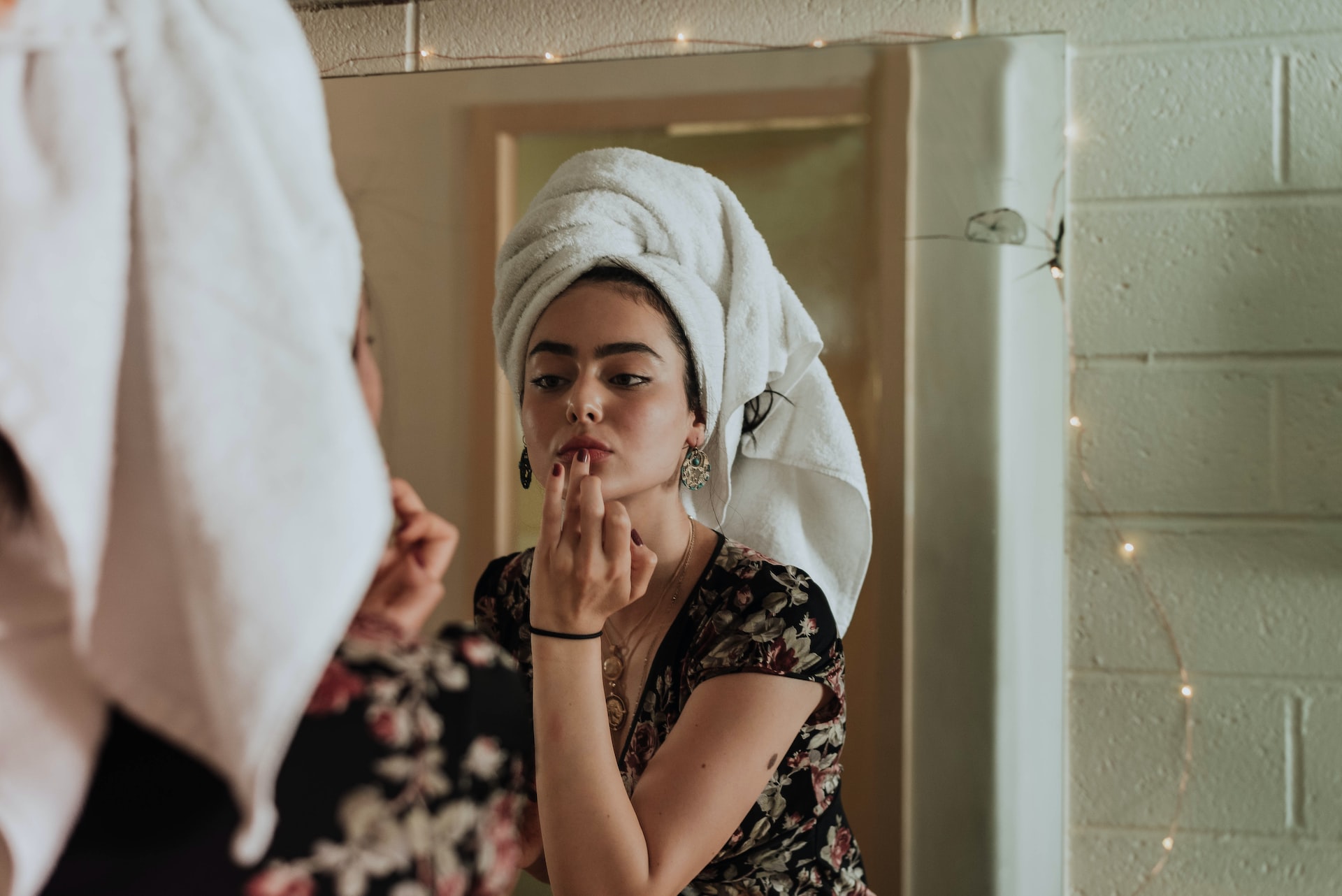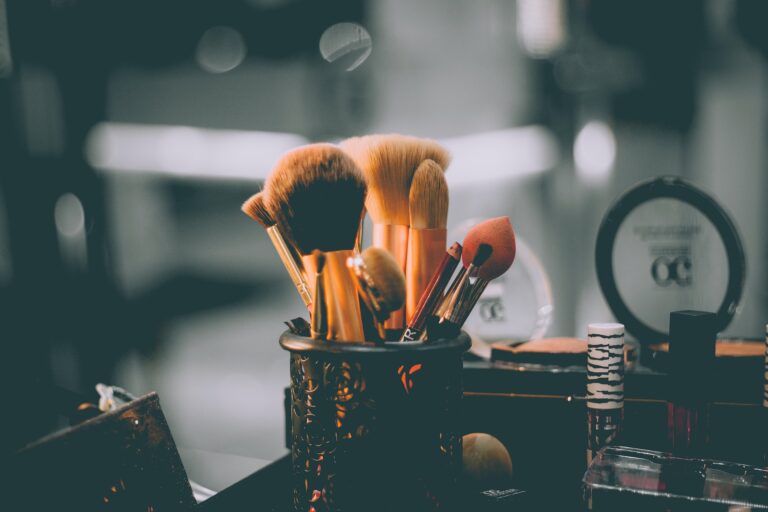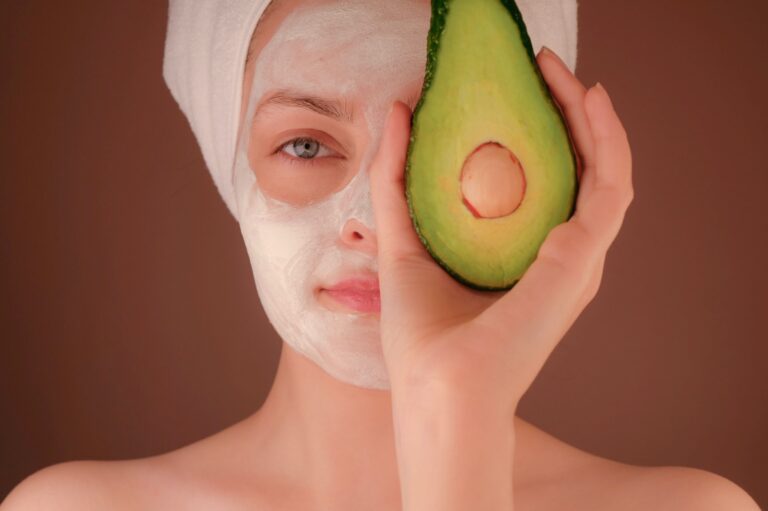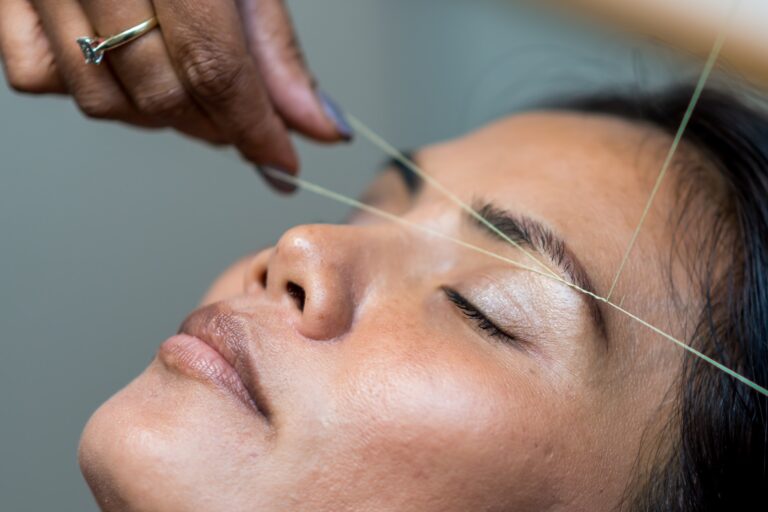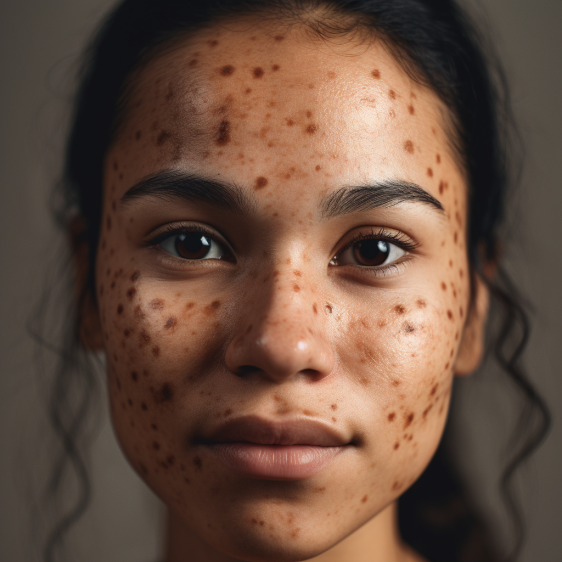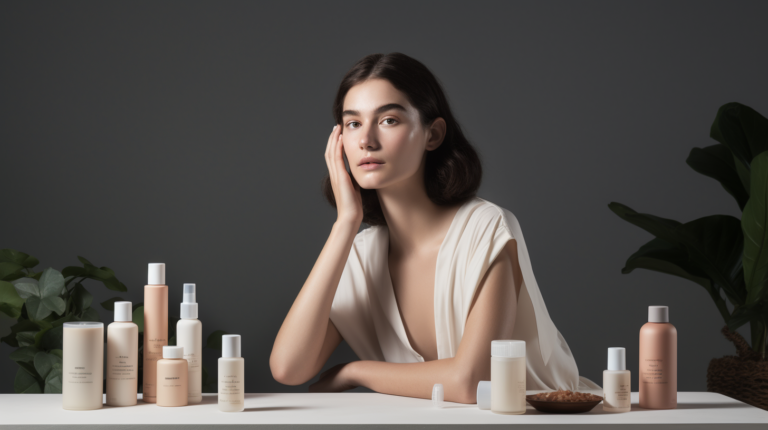9 Unlock the Best Skin care Routine Order for Optimal Results
As an Amazon Associate, I earn from qualifying purchases.
Disclosure: Some of the links in this article may be affiliate links, which can provide compensation to me at no cost to you if you decide to purchase a paid plan. You can read our affiliate disclosure in our privacy policy.
The Perfect Skincare Routine Order for Flawless Skin
Introduction
You know the feeling when you look in the mirror and don’t recognize who you are looking back at? That’s what happens when your skin is out of balance. Thankfully, it doesn’t have to stay this way! With a good skin care routine that’s specifically tailored to your individual needs, you can start seeing real results.
But before you jump into putting together a new routine, there are some important things to consider. What are my goals? What products would be best for me? How often should I be using these products? Don’t worry – we’re here to help! In this article, we’ll show you how to put together a skincare routine that is perfect for your unique skin type and needs. Ready to get started? Let’s go!
Evaluate Your Skin Type
Before you can put together a skincare routine that’s right for you, you have to know what kind of skin you have. Knowing your skin type can be tricky, but it’s important in order to make the most out of your products and create a routine that works.
The most common skin types are: normal, dry, oily, combination, and sensitive. It’s possible for your skin type to change over time too.
If you have normal skin, there is no need for major adjustments. Just use a gentle cleanser and light moisturizer as part of your daily routine.
Dry skin needs more moisture and hydration than normal skin—so use nourishing products with gentle ingredients such as natural oils or soothing botanicals to replenish and protect it.
Oily skin needs a lightweight moisturizer with oil-absorbing ingredients such as clay or charcoal. Matte formulas work best here to help reduce shine during the day.
For combination skin, it’s important to find products that balance both dryness and oiliness without stripping away too much moisture or clogging pores.
Sensitive skin requires extra caution when it comes to product selection—choose fragrance-free options with minimal ingredients that won’t aggravate the skin further.
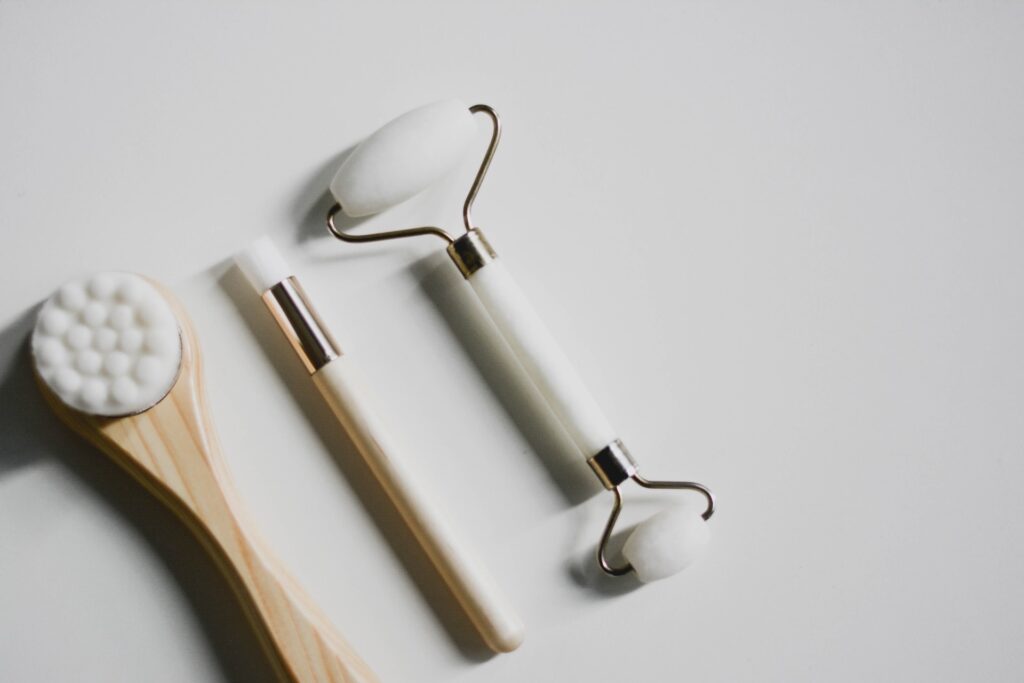
Choose the Right Cleanser
Cleansers are one of the most important elements of your skincare routine. You want to choose one that’s not too harsh and not too gentle—one that’s just right for your skin type, which might vary from season to season.
If you have oily or combination skin, consider a gel-based cleanser with salicylic acid or a foaming cleanser. These will help remove excess oil without stripping your skin of its natural oils, and can also help with acne. For dry or sensitive skin, try an oil-based cleanser with hydrating ingredients like glycerin or ceramide to help keep your skin moisturized and prevent irritation.
If you’re a beginner to skincare, double cleansing is a great way to get started. Start by using an oil-based cleanser first to remove makeup, oil and dirt, followed by a water-based cleanser to deeply cleanse your pores without drying out your skin. And don’t forget the importance of removing all traces of cleanser—leaving residue on your face will block the benefits of any other products you use afterward!
Determine Your Toner and Serum Needs
Do you know what toner and serum does for your skin? Toner can help restore your pH balance or stimulate cell regeneration, while serum provides antioxidants to help protect your skin.
If you want to put together a skincare routine that works for you, it’s important to know what type of toner and serum is right for your skin type. Not sure? Here’s a quick breakdown:
Toners
-
For oily skin: Look for an astringent toner with salicylic acid, lactic acid, or alpha-hydroxy acids (AHAs) to clear clogged pores and remove excess oil.
-
For dry skin: Choose an alcohol-free toner with hyaluronic acid, glycerin, ceramides, and chamomile extract to hydrate and nourish the skin.
-
For combination skin: Find one that’s balancing but still lightly hydrating (try a mild AHA or BHA formula).
Serums
-
For oily skin: Use a lightweight serum with active ingredients like retinol, niacinamide or adapalene.
-
For dry skin: Look for serums containing vitamin C or hyaluronic acid, which can help restore moisture levels.
-
For combination skin: If you need both hydration and balance in one product, opt for a water-based serum that contains multiple nourishing ingredients like essential oils and antioxidants.
Moisturize Effectively
Once you’ve gently cleansed and toned your face, it’s time to moisturize. Moisturizing is a key step in the skincare process and one that should never be skipped. You want to find a moisturizer that fits your skin type and gives your skin the nourishment it needs.
Identify Your Skin Type
Before you can find the right moisturizer, you need to be sure which type of skin you have: dry, oil or combination. You can figure out what works best for your skin by assessing its texture and hydration level. A good way to test this is by pressing your hands against your face—dry skin will feel tight, while oily skin will feel greasy. Combination-skin types will have areas on the nose, forehead or chin that are greasy, but other parts of the face are normal or dry.
Select The Right Moisturizer
Once you’ve determined your skin type, look for a moisturizer formulated for it. For example, if you have dry skin you’ll need something that deeply hydrates the complexion and helps retain moisture throughout the day—like an antioxidant moisturizer with fatty acids like omega 6 and 9 for extra hydration benefits. If you have oily or combination skin look for something lighter—like an oil-free gel-cream formula that’ll help keep shine at bay without feeling heavy on the face.
The whole point of moisturizing is to lock in moisture, so make sure whatever cream or lotion you choose has hydrating ingredients like glycerin, hyaluronic acid or alpha hydroxy acid (AHA). Don’t forget to read reviews of products before buying them to
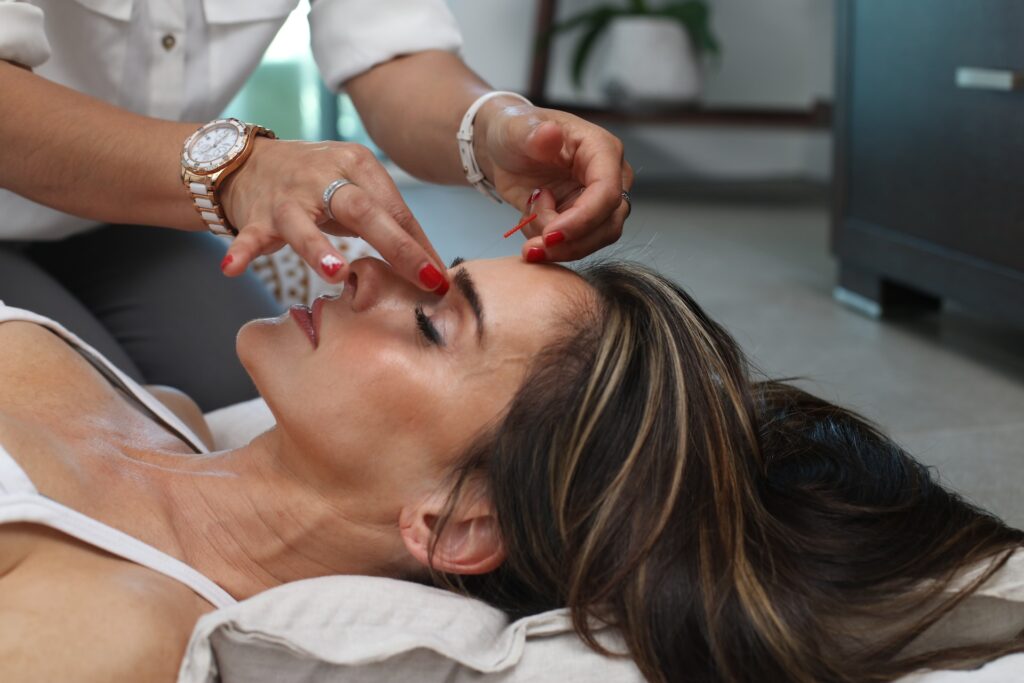
Don’t Forget Sunscreen
When you think of skincare, it’s easy to forget one big aspect: Sunscreen. Wearing sunscreen every day is essential to keeping your skin healthy, so don’t forget to include it! The skin around your eyes is especially delicate and prone to premature aging due to sun exposure, so make sure you have a good sunscreen specifically for your eye area.
Some great benefits of sunscreen for your skincare routine include:
-
Protection from sun damage and prevention of wrinkles and dark spots.
-
Reducing the risk of certain types of cancer, including melanoma
-
Lowering the signs of aging like dullness and loss of elasticity
-
Helping keep skin hydrated
It’s recommended that you apply sunscreen every two or three hours if you’re outside for long periods. Even on cloudy days, UV rays can still affect your skin—so put on a good sunscreen before you start your day. That way, you can be sure that you’re safe from the damaging effects of the sun!
Incorporate Face Masks for an Extra Boost
One of the best ways to step up your skin care game is to incorporate face masks. Face masks come in a variety of types, so it’s easy to find one that’s tailored to your skin type and needs. From sheet masks infused with essential oils or collagen, to exfoliating masks that help remove dead skin cells and unclog pores—masks help restore moisture to your skin and can supercharge your routine.
For example, if you’re battling signs of aging like wrinkles or sagging skin, then a mask containing peptides and other essential ingredients can do wonders for helping give you firmer looking skin. Or say you’re having issues with dark spots or acne; there are special sorts of face masks made specifically for those problems.
It’s important not to overdo it by wearing a mask more than once per week though, since too much fussing can be counterproductive and make skin problems worse in the long run. Try keeping your weekly mask routine simple but effective—if you’d like extra benefits add other targeted serums or toners after the mask clarifies any impurities.
You don’t have to break the bank either; there are plenty of affordable options out there so you don’t have to worry about spending a fortune just to get good results. So why not give face masks a try today? You might be surprised at how much smoother and brighter your skin looks after some regular pampering!
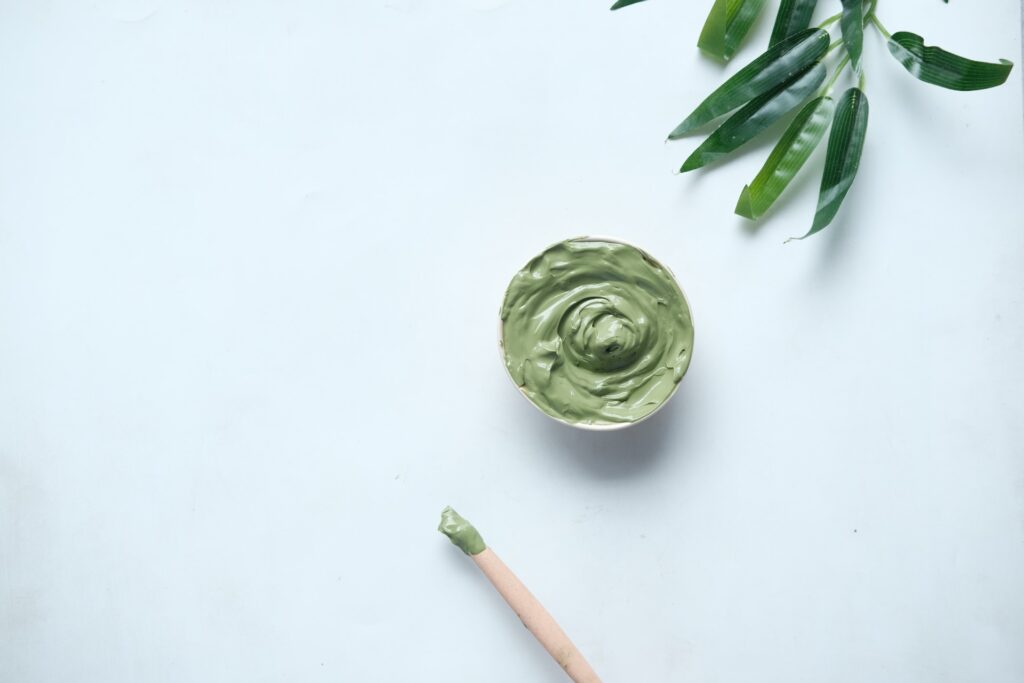
Understanding Your Skin Type
Now, let’s talk about understanding your skin type—this is one of the key steps to putting together a skincare routine that’s right for you. So what types of skin do we have?
Typically, there are four different types: normal, combination, oily or dry. Do you know what type you have? Here’s a quick review:
-
Normal: You have balanced skin that isn’t too oily and isn’t too dry—it’s often clear, healthy and has no visible pores.
-
Combination: You experience both oily and dry parts of your face and may have an oily forehead, nose and chin but dryness around cheeks.
-
Oily: Your skin tends to be shiny with visible pores on the forehead, nose and chin.
-
Dry: Your cheeks are usually the most affected areas where your flesh can feel tight or itchy or may experience flaky patches.
Figure out which one
Assessing Your Lifestyle
Once you know your lifestyle, you’ll be better equipped to choose products that are tailored for your skin type and lifestyle.
For example, if you have a job where you travel regularly, it may be helpful to look for products that can work in different climates. Or if your lifestyle is more on the active side with sports and outdoor activities, you’ll likely want something that’s sweat proof.
SPF Protection
It’s also important to assess your lifestyle for SPF protection. If you live in areas with high UV index, or spend more time outdoors than indoors, you may want something robust like a broad-spectrum sunscreen that has both UVA and UVB protection.
But if your daily routine is mostly indoors, then a moisturizer with SPF should meet your needs while still hydrating and nourishing your skin.
Remember to use SPF no matter what kind of lifestyle you have—SPF is known to help slow down your skin’s aging process and protect from skin cancer. And when looking for SPF protection based on the climate, look for waterproof and sweat-proof options so that the product won’t wear off easily throughout the day.
Developing a Customized Skin Care Routine
You’re ready to put together your own customized skin care routine in order, one that fits into your life while also helping you achieve the look and feel you desire. Before getting to the products though, it’s important to understand the basics of a good skin care regimen.
Cleansing
Cleansing is non-negotiable when it comes to any skincare routine—you must cleanse your skin every day (and night). This helps remove dirt, excess sebum, bacteria, and other impurities that accumulate on your skin throughout the day. It’s especially important if you wear makeup as this can clog pores and prevent your skin from breathing.
Exfoliating
This should be done around once or twice a week, depending on your skin type and sensitivity. Regular exfoliation helps remove dead skin cells—to help brighten up dull patches and improve cell turnover—as well as keep pores unclogged.
Treatments
Treatments are products like serums, masks, toners and boosters. These are made for specific concerns like dehydration, dark spots or wrinkles. Adding treatments to your routine can take your skincare up a notch and target any issues you may be dealing with quickly and effectively!
You now have all the ingredients needed to craft a skincare routine tailored just for you—all it takes is a little bit of experimentation with different products in order to find out which work best for you!
Steps to create an ideal skin care routine
When you’re putting together your perfect order of skin care routine, here’s what you should consider:
Tailor Your Products To Your Skin Type
The first step is to figure out what type of skin you have. It could be oily, dry, normal or combination skin. Once you’ve identified this, you can pick skincare products tailored to your skin type. An added bonus is that using the right products for your skin type can help keep blemishes at bay and make your complexion look picture-perfect.
Exfoliation Is Essential
You should also give exfoliation its due importance as part of your skincare routine. This process helps get rid of dead cells from the outermost layer of your skin without needing to resort to a chemical peel. You can opt for a mild exfoliant or use a gentle scrub-type cleanser instead—just don’t overdo it! Over exfoliating can lead to dryness and irritation on the skin.
Moisturize Daily
Your skincare routine (and life in general) won’t be complete without moisturizing daily! The purpose of moisturizer is to help lock in moisture and keep your complexion looking plump and healthy — so don’t skip out on this vital step! For added benefits, choose a moisturizer that comes with SPF protection for sun coverage during the day.
When to See a Dermatologist
You might already have a great skin care routine, but sometimes it’s best to ask a pro. That’s why you should consider seeing a dermatologist if you experience any of the following:
-
Acne that doesn’t respond to over-the-counter treatments
-
Skin affected by allergies or sensitivity
-
Unusual growths, lesions, or change in moles
-
Recurring skin infections
-
Unexplained itching or dryness
You can also visit a dermatologist to get advice on how to prevent skin aging and sun damage. A professional can help you find the right products and ingredients to keep your skin looking its best and give you tailored advice for your unique skin type. So don’t be afraid to seek help if you need it!
Best products for creating a skin care routine
When it comes to your skin care routine, the best products are those that are suited to your particular skin type. It’s all about finding the right balance between what works and what you can afford. Here are a few of the most important things to consider when putting together a skin care routine:
Cleanser
Your cleanser should be gentle enough that it won’t strip away essential oils and damage your skin barrier. Look for cleansers that are formulated without harsh ingredients like sulfates, alcohols, and fragrances.
Moisturizer
A good moisturizer will keep your skin hydrated and nourished by replenishing lost moisture from cleansing. Make sure you read the label on moisturizers to get an idea of their ingredients so you can find one that works well with your skin type. If you have dry skin, look for heavier creams or oils; if you have oily or acne-prone skin, choose lighter lotions or gels.
Sunscreen
It’s no secret that sunscreen is essential for protecting your skin against UVA and UVB rays. Not only does sunscreen shield against sunburns and wrinkles, but recent research has found that it can also help prevent sun-induced skin cancer. Choose a broad spectrum sunscreen with SPF 30 or higher and reapply every two hours if you’re spending time outside on sunny days.
The best products for creating a successful skin care routine are those that will work well with your unique needs and budget—but ultimately, don’t forget to listen to what your complexion is telling you!
How often should you change up your routine?
When it comes to your skincare routine, how often should you make changes? The answer depends on a few things, including the type of products you’re using, your skin type and any changes in your lifestyle or environment.
If you’re using quality products that are tailored to your skin type, then it’s best to stick with them. If anything, you may need to tweak or adjust based on how your skin reacts or responds. For instance, if you find that you have an overproduction of oils during the day, then you may want to apply a little more moisturizer at the end of the day and skip adding any more oil-based products.
Sometimes, however, it’s best to change up your routine altogether depending on what’s happening in your life—like if you move from a temperate climate to a dry one. In this case, it’s best to swap out oil-based formulas for water-based ones and focus more on hydration. If there are other changes in lifestyle or environment—like traveling—it might be necessary to adjust accordingly as well and maybe even take along a special travel kit with all the essentials.
Overall , the most important thing is to pay attention to how your skin reacts and then adjust as necessary by changing up the products or frequency of use.
What ingredients to look for in your products?
Now that you know the basics of how to put together a skincare routine, the next step is to start looking for products with the right ingredients. You need to consider what active ingredients are best for your skin type and age.
Cleansers
Foam and cream cleansers can be used, depending on your skin type. If you have combination or oily skin, a foaming cleanser that contains active ingredients like salicylic acid or benzoyl peroxide can help reduce excess oil production and unclog pores. If you have dry or sensitive skin, opt for a mild cleanser that contains moisturizing properties such as glycerin or hyaluronic acid.
Moisturizers
Moisturizers play an important role in reversing and preventing dryness, reducing redness and preventing wrinkles from forming. For most skin types, an oil-free moisturizer with SPF is recommended to protect against UVA/UVB rays as well as environmental stressors. If you have combination or oily skin, look for a lightweight lotion with ingredients like aloe vera and chamomile extract that helps hydrate without making your face greasy. For dry skin, opt for thicker creams with more emollients like shea butter; these will help nourish your skin without clogging your pores.
Specialty Products
If you’re looking for more targeted skincare solutions, there are many specialty products available containing a variety of active ingredients that address specific concerns such as acne, aging and hyperpigmentation. Look for formulas containing retinol (an anti-aging ingredient), alpha hydroxy acids (for acne-prone skin
What are the essential steps for a skin care routine?
Creating the perfect skincare routine for you can be a daunting task—but it doesn’t have to be. Like most things, you just need to break it down into manageable steps. Here are the essential steps you should use for your daily proper skin care routine order:
Cleansing
The first step every morning and night is cleansing. This is an important step as it removes dirt, oil, and impurities from your skin without stripping away its natural oils. When choosing a cleanser, make sure it’s suited to your skin type and won’t cause irritation.
Toning
Toning isn’t necessary for everyone but those with combination or oily skin should consider using one as part of their skincare routine. Toners help remove any excess dirt that might have been left after cleansing, help keep skin hydrated, and restore the natural pH balance of your skin.
Serum/Facial Oil
Serums contain active ingredients that penetrate into the deeper layers of the skin allowing for maximum absorption and better results than just moisturizing alone. For those with dry or mature skin, facial oils are also a great way to add an extra layer of hydration and nourishment to your routine.
Moisturizer
A moisturizer helps to keep the skin hydrated by trapping water in its outer layers. It’s important to pick one that will suit your particular skin type so that it can do its job properly. You may want to look for one with added SPF protection to protect your skin from sun damage during the day too!
eye cream
For your eyes, an eye cream is essential. The skin around your eyes is very delicate and prone to wrinkles, so it needs extra attention. An eye cream can help address signs of aging, like crow’s feet, dryness, dark circles or puffiness. It should be applied like a moisturizer—gently patting it in with your ring finger around the eye area.
Look for an eye cream that’s specifically formulated to provide long-term hydration and help reduce the look of wrinkles and fine lines. Ingredients like hyaluronic acid and antioxidants can help to lift and firm the skin. If you have dark circles or bags under your eyes, you might want to choose an eye cream that offers even more brightening effects with ingredients like caffeine or Vitamin C.
sensitive skin
If you have sensitive skin, you need to be extra careful when putting your routine together. The key is to use gentle, natural ingredients that won’t cause a reaction. Here’s what you should include:
Cleanser
Look for a mild cleanser that is free of synthetic chemicals and fragrances. Natural ingredients such as aloe vera, calendula, and chamomile are good choices as they are gentle and non-irritating.
Serum
A lightweight serum is ideal for sensitive skin. Look for a serum that contains ceramides, an active ingredient that helps to restore the skin’s natural barrier and reduce inflammation.
Moisturizer
Choose a fragrance-free moisturizer with hyaluronic acid, which helps to draw moisture into the skin and reduce redness. If you have dry or itchy skin, look for ingredients like shea butter or jojoba oil to provide extra hydration.
Sunscreen
Sunscreen is essential for all skin types, but especially those with sensitive skin because they may be more susceptible to sunburn or rashes caused by chemicals in sunscreens. Choose a broad-spectrum sunscreen with an SPF of 30 or higher that contains physical blockers like zinc oxide and titanium dioxide instead of chemical blockers morning skin care routine.
retinol
Retinol is an anti-aging hero when it comes to night time skin care routine. It’s a form of Vitamin A and it works by increasing cell turnover, which helps reduce the appearance of wrinkles, dark spots and acne. The key is to start slow—your skin needs time to adjust, so begin with a lower percentage of retinol in your routine, then work your way up as your skin gets used to it.
When using retinol, be sure to:
-
Start off slowly – think of it as slowly building a tolerance
-
Use gentle cleansers and moisturizers
-
Be generous with sunscreen (it breaks down retinol and is especially important if you’re using a higher percentage)
-
Apply at night and wait at least 15 minutes before applying other products
-
See a dermatologist or skincare specialist before starting a retinol routine
Retinol can help brighten your complexion, reduce wrinkles and give you smoother skin—just remember to go easy when starting out and always wear SPF!
Skin health
Fine lines, dull skin, and skin irritation are some of the most common skin concerns that people face. Fortunately, targeted skin care can help address these issues and give you healthy skin. To improve fine lines, it’s important to use a night cream or eye cream that contains ingredients like hyaluronic acid and ceramides. These ingredients help repair the skin barrier and improve water retention, which can reduce the appearance of fine lines over time. When choosing a night cream or eye cream, look for products that are specifically designed for your skin type and skin concerns.
Dull skin can also be improved with targeted skin care. Using a gentle cleanser to wash your face can help remove dirt and oil without stripping your skin of its natural oils. Exfoliating your skin once or twice a week can also help remove dead skin cells and improve skin texture. Adding a facial roller to your routine can help improve circulation and give your skin a healthy glow.
If you have skin irritation, it’s important to use targeted skin care products that are designed to soothe and calm the skin. Look for products that contain ingredients like aloe vera, chamomile, and calendula, which are known for their anti-inflammatory properties. Avoid using harsh products on your skin, as these can further irritate your skin and exacerbate the problem.
Conclusion
Having a skincare routine that works for your skin can take some trial and error, but it’s definitely worth the effort. Everyone’s skin is unique and requires different levels of hydration and protection, so it’s important to be mindful of your individual needs.
Above all, listen to your skin. It’s telling you what it needs and doesn’t need, so try and pay attention. Keep track of what works, and don’t forget to keep your routine simple. Anything too complicated can be hard to keep up, and can make it difficult to identify what products are helping and which ones may be causing a problem.
Finding the right skincare routine can seem daunting, but it doesn’t have to be. Just make sure to take care of your skin and treat it with respect, and it’ll take care of you.
What are the 5 skin-care routine?
Now that you have a better understanding of your skin type and what products to look for, you can now put together a skincare routine that is right for you. To get started, the most basic skincare routine should include the following five steps:
-
Cleansing – use a cleanser suitable for your skin type to remove dirt and cleanse the surface of your skin.
-
Exfoliation – use a gentle exfoliator once or twice a week to remove dead skin cells, boost circulation, and reveal brighter and smoother skin.
-
Toning– using a toner helps to restore the pH balance of your skin and remove any remaining traces of dirt and makeup.
-
Moisturizing – this is essential for all skin types as it helps to keep your skin hydrated and protected from environmental damage such as pollution, sun exposure or extreme temperatures.
-
Sun Protection – it is important to always wear sunscreen with an SPF of 15 or higher when going outdoors during the day, as this helps protect you from UV damage which can cause wrinkles, sun spots and other long term damage.
What are the 7 steps of skincare?
If you’re ready to create a skincare routine, there are 7 steps you’ll want to take. Here’s a quick snapshot of what that entails:
- Cleansing: You’ll start off with a gentle cleanser that won’t strip your skin of its natural oils.
- Toning: You’ll follow up with toner, which helps to remove any remaining residue from your cleanser and also helps even out your skin’s pH balance.
- Exfoliating: This step is optional, but if you choose to do it, don’t exfoliate more than once or twice a week.
- Moisturizing: Here’s where you apply the moisturizer of your choice, preferably one that works with your skin type and any particular concerns you may have (like acne or wrinkles).
- Using SPF: We can’t stress this enough—always use sunscreen, even when it’s cloudy or foggy outside! That way, you can protect your skin from damage caused by the sun’s UVA and UVB rays.
- Applying Spot Treatments: If you have acne or other blemishes, now is the time to apply spot treatments like salicylic acid or benzoyl peroxide to help clear those up quickly.
- Nighttime treatment: Before bed is when you should apply nighttime treatments like retinol for anti-aging benefits or spot treatments for acne-prone skins.. With these 7 steps in place, it won’t be long before see and feel healthier skin!
What are the essential steps for a skin care routine?
If you’re ready to get started with a skin care routine that works for you, there are several essential steps you need to follow. Here’s a breakdown of the basics:
Cleanse
It’s important to make sure your skin is clean and free from dirt, makeup, sweat and other impurities before taking care of it. You can choose between liquid or cream cleansing products or even a simple mouse cleanser. The most important part is that whatever product you choose should work well with your skin type.
Tone
Toning helps balance pH levels in your skin while also getting rid of any excess dirt and oil it may be holding on to. Look for toners that contain natural ingredients because they tend to work best without causing irritation or breakouts.
Hydrate
The next step is to hydrate your skin using a good moisturizer that’s specific for your skin type. If you have acne-prone skin, you may want to look for something oil-free; if your skin is dry, opt for something more hydrating. Whatever product you choose, be sure to apply it as directed on the package and give it time to sink into the skin before applying makeup.
Sun Protection And Prevention
No matter what type of skin care routine you’re following, don’t forget about sunscreen! Every day should include at least an SPF 30 sunscreen applied liberally all over the face — even if you’ll be inside all day. Sun protection helps prevent aging and other forms of damage caused by UV rays.
How can I determine which products are best for my skin type?
When it comes to skincare, products that are right for your skin type can make all the difference in getting glowing and healthy looking skin. But how can you determine which products are best for your skin type?
First, you need to figure out what your skin type is. Is it dry, oily, normal, combination or sensitive? All of these types have different needs when it comes to skincare products. Once you’ve determined your skin type, you’ll know exactly what ingredients to look for in skincare products that will nourish and care for your unique skin. Look for moisturizers that contain hydrating ingredients like hyaluronic acid or ceramides for dry skin. For oily skin, try an oil-free formula with salicylic acid or glycolic acid to help absorb excess sebum and keep oil levels balanced.
The next step is considering the texture of the product – whether it’s a cream or a lotion or something else entirely – then consider what other ingredients are in the formula that will work with your particular concern areas. For example, if you have aging concerns like wrinkles, look for wrinkle-fighting ingredients such as vitamin C and peptides to help reduce their appearance. If you’re concerned with dark spots due to hyperpigmentation look out for brightening ingredients like licorice extract and niacinamide (Vitamin B3). Finally, keep an eye out for natural and organic ingredients sourced from safe suppliers – these are usually the most gentle on the skin but also deliver powerful results.
By researching products, understanding your skin type and ingredient labels, you can put together a skincare routine that works best for you and truly
Are there any natural remedies or DIY treatments that can help improve my skin?
You may have heard of natural remedies or DIY treatments that can help improve your skin, and you’re wondering if they work. Well, the answer is yes—but the key here is finding out which ones are right for your skin type.
For example, if you have oily skin, many natural ingredients can help balance out your sebum levels and reduce shine. A few of these include lemon juice and yogurt, which you can apply to your face as a natural mask; honey, which can act as a moisturizer; or apple cider vinegar or tea tree oil, which can help fight off bacteria while reducing inflammation.
If you have dry skin, there are quite a few options to choose from such as oat meal and yogurt to make a mask or using almond oil as a moisturizer. You could also use aloe vera gel (which will help soothe any redness) or honey (which is an antioxidant).
Whatever ingredients you use, it’s important to remember that not all DIY treatments are created equal—especially when it comes to treating specific and unique skin care concerns. So be sure to do your research before trying them out and pay attention to what works for your skin and what doesn’t.
What potential risks should I be aware of when using certain skin care products?
It’s important to remember that some skin care products, especially those containing chemical or synthetic ingredients, can have potential risks. Before you start a new routine, it’s important to take a minute and research the ingredients in the products you are using. Be aware of any allergies you may have to specific components, as well as any possible irritations that may arise from mixing multiple ingredients together.
You should also take into consideration any pre-existing skin conditions, such as eczema or rosacea, and how the products you are using might affect them. If there is anything that concerns you, it’s best to consult with a dermatologist before adding these skincare products into your routine.
You should also take into account the dosage and frequency of use – overusing active ingredients can actually cause more harm than good. Make sure that you only use enough product for one application per day where necessary!

